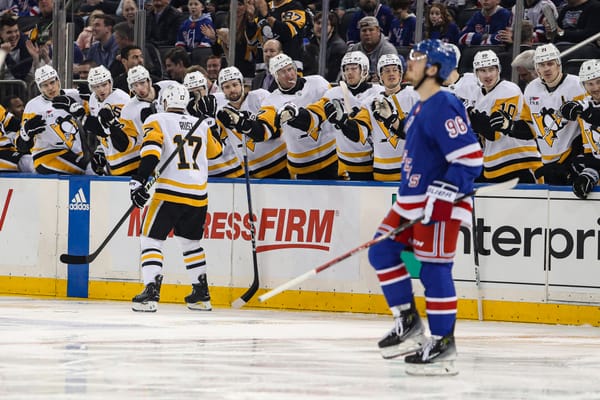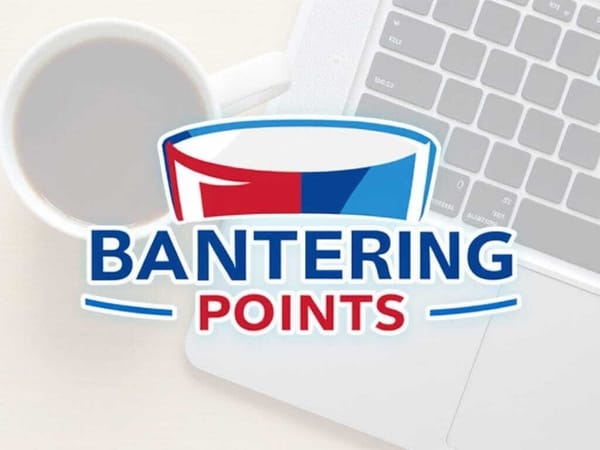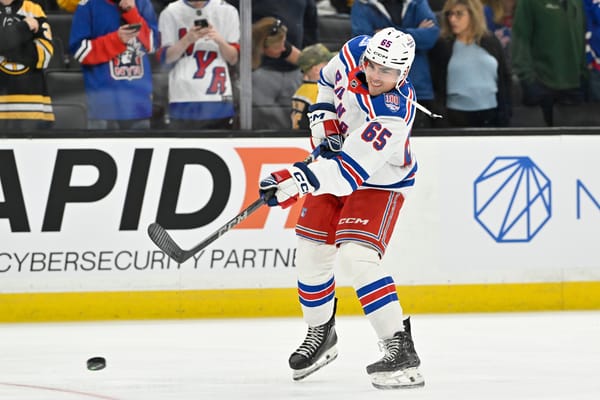The Economics Of Vegas Expansion (Part 3)
New York Rangers’ Edition!
In Part 1 we laid out the quotas and rules set forth for both Vegas and the burdened 30 existing teams. In Part 2 we elaborated upon certain “types” of transactions to anticipate during expansion, given what we know about the incentives and salary cap aspects. For Part 3 I’d like specifically take a look at our very own New York Rangers, and perhaps some creativity we could see from general manager Jeff Gorton.
The Rangers seem to be a very “middle-of-the-road” team when it comes to their projected expansion standing. They appear to be a team neither wholly exploited by expansion, nor altogether free of burden. For instance, teams like Anaheim or Nashville, with four exposable “quality” defensemen, have an inherently more cumbersome month of June awaiting. Yet teams like Arizona or St. Louis, given their current construct, stand to risk very little beyond their allotted protection spots.
In other words: the Rangers, in my view, are right in the middle of the pack when it comes to expansion woes.
Protection Spots
Each NHL team will have two available approaches to protecting players:
A) Seven forwards, Three defensemen, One goalie
or
B) Eight skaters, One goalie
Obviously Option A is, in a vacuum, preferable to Option B, as protecting eleven assets is usually favorable to only eight. Again, the only teams particularly inclined to use Option B will be teams with an elite depth of exposable defensemen. And the Rangers certainly don’t fall under that category.
So we’ll assume Gorton’s Rangers will go with Option A:
Dan Girardi, Henrik Lundqvist, Rick Nash, and Marc Staal are all required to be protected, given the limited-mobility aspects of their respective contracts. The only ways the Rangers do not have to allocate a protection spot to such a player is if:
- Player agrees to waive their no-mobility contract clause. Unlike waiving for trades, which can have latent effects later on, a player waiving his NMC for the expansion draft only will still keep their NMC completely intact for the remainder of the contract.
- Player agrees to be traded prior to June 17. Quite simply, if an NMC player can be traded before protection lists are due, the original team doesn’t have to protect them because they are now on a different team.
- Player is bought out prior to June 17. Again, a team is freed from a player’s NMC if the team no longer has the contract on their books. The buyout widow will likely open 48 hours after the Stanley Cup is won (by either Nashville or Pittsburgh), giving teams at least a few days to mull any expansion-influenced buyouts./
Quotas
Players in bold represent a quota-eligible exposure. Remember: each team must have two quota forwards, one quota defensemen & one quota goalie exposed come June 17. Here we have the Rangers satisfying defense (Nick Holden & Kevin Klein) and goaltending (Antti Raanta) exposures, but one short of the required two forwards (only Michael Grabner serves as an eligible right now).
This is a wrinkle for New York, but certainly one that can be solved with relative ease.
Re-signing just one of Jesper Fast, Tanner Glass, Oscar Lindberg, Brendon Pirri, or Matt Puempel before June 17 would satisfy the requirement. However all players but Glass have the right to salary arbitration in July, thus are somewhat incentivized against re-signing this early into the offseason. Or, a bit more elaborately, the Rangers could trade one of Holden or Klein in exchange for an equivalent-depth forward to expose.
Re-signing Glass to a one-year contract before June 17, and having him play the majority of games in Hartford next season, is a possible solution that just screams “New York Rangers.”
Or, even more elaborately, the Rangers could cut a deal with Vegas. Should the Rangers bribe Vegas (via draft picks or prospects, perhaps?) to select a specific player in expansion, I don’t see how the quota would matter beyond that point. The threat is a team that fails to meet the quota risks losing extra players to Vegas; but an arranged marriage with Vegas would undoubtedly quash any such penalty.
Expected Loss
Barring any expansion-oriented trades made from now until June 17, the Rangers will most likely lose one of five players (in alphabetical order):
- Jesper Fast (RFA, Minimum Qualifying Offer: $1,000,000
- Michael Grabner (1 yr, Cap Hit: $1,650,000)
- Nick Holden (1 yr, Cap Hit: $1,650,000)
- Oscar Lindberg (RFA, Minimum Qualifying Offer: $682,500)
- Antti Raanta (1 yr, Cap Hit: $1,000,000)/
Again, a trade with another team in the interest of expansion-mutual benefit can easily happen. Gorton cutting a deal with McPhee for ulterior motives is similarly a very real possibility, too. How much futures would you trade to not only keep the five players listed above, but also have the contract of Girardi or Klein absorbed entirely from the books? Or, more importantly, what kind of “bribe” or “waste removal” market price will McPhee be charging during expansion?
Shattenkirk & Smith
The good news is the hype for the Rangers to retool their blueline, specifically via unrestricted free agency, comes after Vegas expansion has ended. When July 1 arrives, there will be no more worry about long-term contracts occupying finite protection spots. Simply put: the Rangers can do what they’ve got to do about expansion, but pursuing Kevin Shattenkirk and/or Brendan Smith for the 2017-18 season (and beyond) is hardly hindered by the Vegas inception.
Other Creative Ideas
Those who follow me on twitter know I’ve been saying this for the last year: expansion may be an opportunity, rather than chore, for the Rangers to acquire defensive help. Other than the impact of “how” and “who” Vegas selects from the Rangers... there is a perhaps prosperous opportunity for Vegas to accrue a nice surplus of assets, and trade them to “bidders” around the league for futures.
From Elliote Friedman’s March 14 “Thirty Thoughts” column:
At the GM meetings, the Golden Knights’ George McPhee let everyone know that once the lists are handed to him, it’s an auction for any unprotected player another team might want. This has outstanding potential.
I agree.
Remember, Vegas must select no fewer than nine defensemen in the expansion draft. Logic suggests they will be indeed be making expansion selections based solely for the purpose of re-selling those selections to the highest bidder. If New York truly believes they are but a few defenseman upgrades away from Cup contention, this indeed has “outstanding potential” for Rangers fans everywhere.
How much dead salary cap hit are we comfortable accruing? How much do we value certain draft picks or prospects? Because if Vegas is looking to gather futures to build their pipeline, the Rangers could make for interesting dance partners with a backroom deal or two. I suspect the 2017 NHL Entry Draft will be quite a show.




